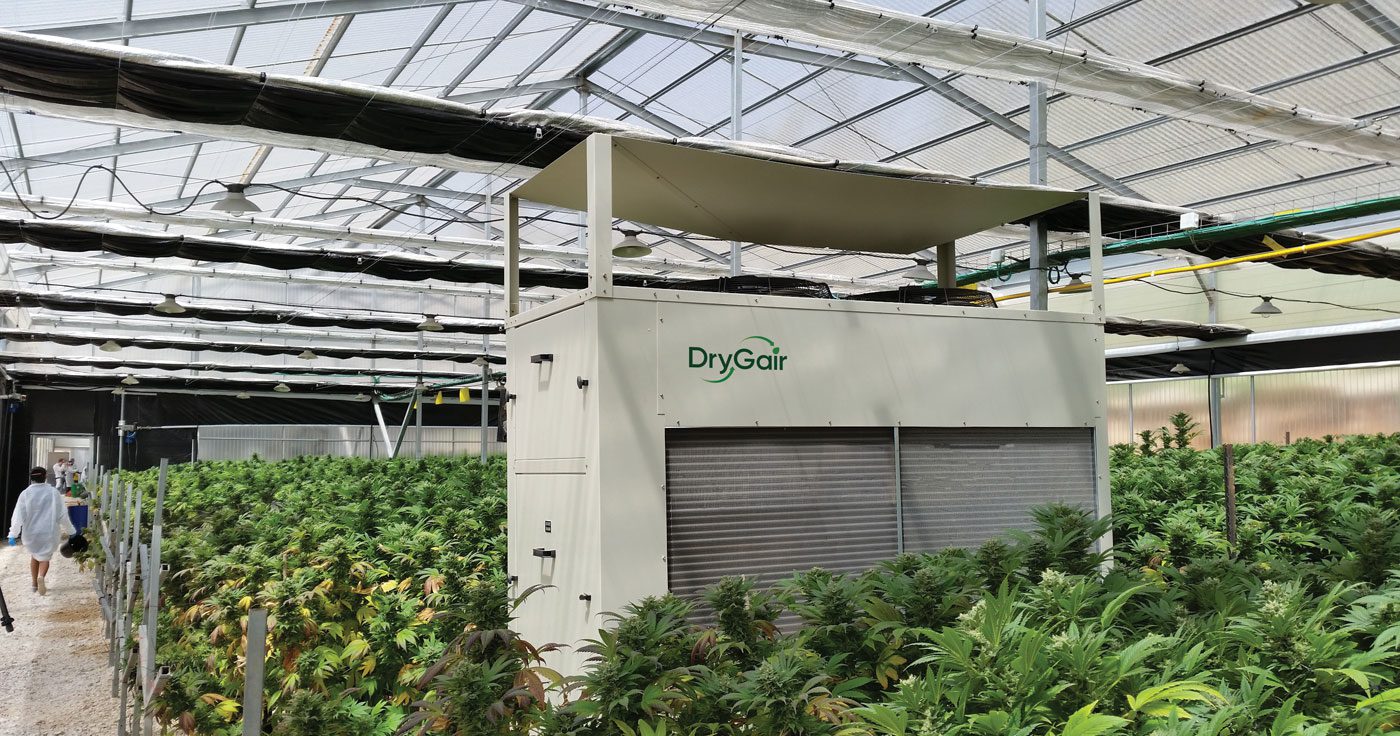It’s hard to find a grower that hasn’t suffered from diseases like bud rot or powdery mildew at one point or another. These are extremely common mildews that can break out in any greenhouse or grow room if the conditions allow it. Once they break out, they may spread like wildfire, infecting more and more plants.
However, there is one surefire method to prevent these molds from taking hold — humidity control. As these fungal pathogens require high humidity, simply restricting relative humidity control levels can prevent close to 100% of cases.

What Are Mildews?
Molds and mildews are actually fungal diseases. They break out when fungal spores meet the right conditions to develop into full-blown mildew. These spores are omnipresent, meaning they’re found almost everywhere. It’s incredibly difficult, not to mention costly, to try to eliminate their presence.
When mildews take hold in a plant, they stunt its development and cause it to rot. Eventually the plants may shrivel and die. Once they break out, they can rapidly infect other nearby plants, potentially destroying an entire grow cycle.
Fortunately, the spores themselves don’t cause any harm. It’s only when they develop into mold that they begin to harm the plants. So, the best, most effective way to prevent these diseases is by simply depriving them of the conditions they need to develop.
The leading factor behind mold and mildew development is high humidity. The two most common diseases, bud rot and powdery mildew, both require a lot of moisture, or even free water, which is a result of the condensation that occurs in very high humidity.

The Problem With Mold
One of the biggest issues growers face when it comes to treating and preventing these molds is detection. There are several visible symptoms, such as gray fuzz, discoloration, yellowing, wilting leaves, or bright green or yellow spots.
However, when symptoms become visible, it’s already too late to prevent the outbreak. At this point, it’s more about managing the disease to mitigate its impact on the grow. That’s a situation most growers would prefer to avoid.
When it comes to cannabis, the problems don’t end with losing maximum yield potential. There are regulatory issues as well, that make any presence of mold problematic.
Growers in many places need to adhere to very strict regulations, similar or even identical to those of pharmaceutical manufacturers. So, there is a very strict limit on mold presence during the growing process and in the final packaged product.
While regulations differ from country to country and state to state, selling and distributing moldy cannabis buds is never acceptable. It can’t be used for further processing either, such as creating concentrates, edibles, topicals, etc.
Selling moldy buds to consumers, or distributing them to patients, will inevitably lead to extensive recalls. No grower wants to face that sort of press surrounding their brand, not to mention the financial losses.
How To Prevent Mildew
As mentioned, the most effective course of action to prevent mildew outbreaks is to avoid the conditions necessary for their development. It’s also the most efficient method, as you can prevent close to 100% of cases, at a relatively low energy cost.
Of course, when you prevent molds from developing in the first place, you gain additional benefits and savings. You can drastically reduce your fungicide use, gain larger yields, and grow higher quality buds.
So, how can you use climate control to prevent mildews?
The answer is to control humidity levels, keeping relative humidity within the ideal range of 50-60%. In theory, even higher levels of humidity would be fine. However, because cannabis buds are very dense, and they constantly transpire water vapor, they may trap moisture inside. So effectively, the relative humidity inside the buds may be much higher than the rest of the environment. This is why growers strive for very low humidity levels, simply to provide a greater safety buffer.
Controlling Humidity With Dehumidifiers
The most efficient way to limit humidity in a grow space is to use dehumidifiers. Most dehumidifiers used in cannabis cultivation use a controlled condensation method to extract water from the air. They take in humid air, cool it inside the unit to extract water from it, reheat it, and release it back to the environment. Some dehumidifiers do this incredibly efficiently too, requiring as little as 1 kWh per 1.2 gallons of water extraction.
Some dehumidifier manufacturers incorporate additional benefits that help create ideal growing conditions, such as air circulation for example.
Circulating air effectively creates uniform conditions all throughout the space, rather than treating the air surrounding the unit over and over. This is incredibly important in preventing mildews, as it’s enough for one plant to experience high humidity for a breakout to occur.
Using the right dehumidifiers, with the right protocols, can prevent as much as 98% of mildew outbreaks, at a very low energy cost. With dehumidification technology as advanced as it is today, it’s no surprise more and more growers turn to it for a solution.
Rom Meir is a writer who specializes in horticulture, climate control, and sustainability. His work with DryGair focuses on educating about humidity issues and efficient humidity control in greenhouses and grow rooms. Learn more at drygair.com.

